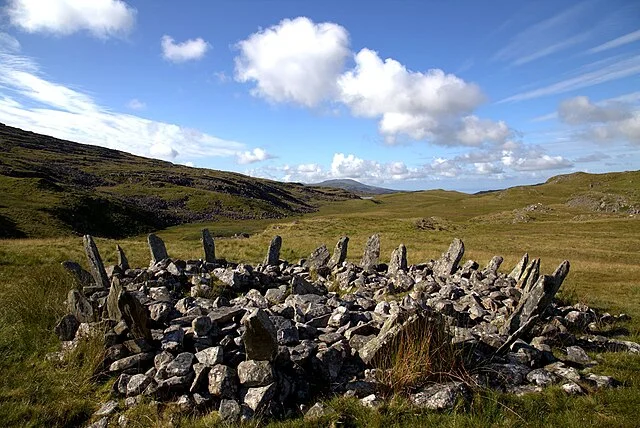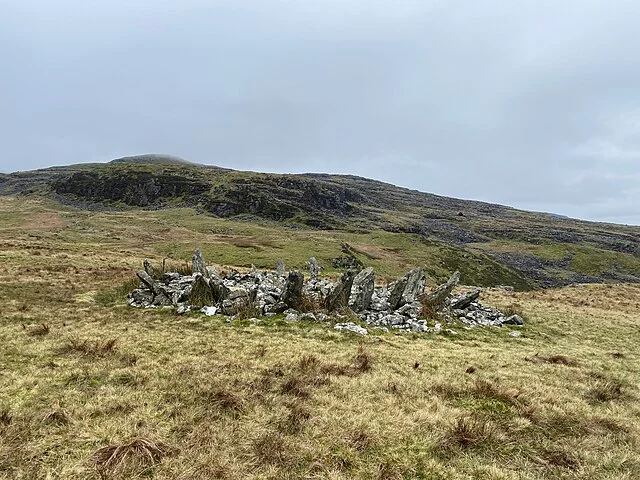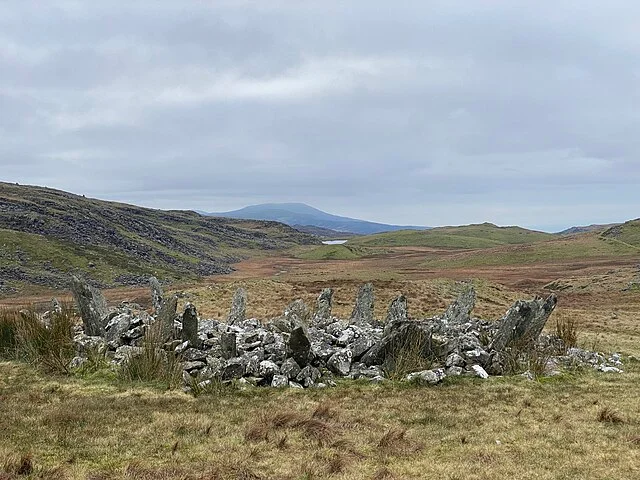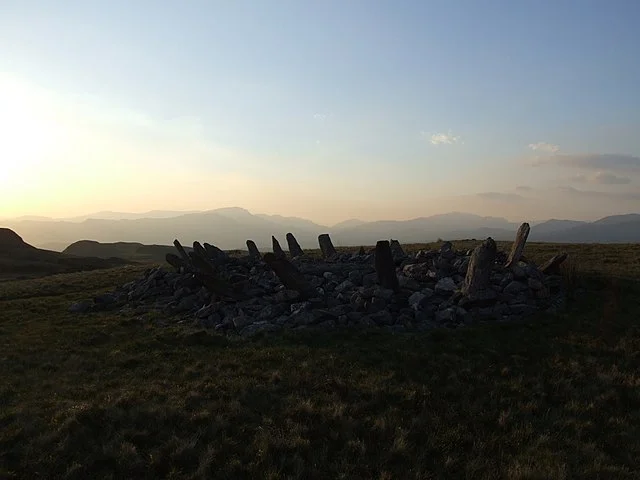Bryn Cader Faner is a Bronze Age burial cairn located in North Wales. The site dates back to around 2000 BC. It is one of the most well-preserved examples of prehistoric funerary architecture in Wales. The cairn stands on a small hill in Snowdonia, offering a panoramic view of the surrounding area.
Get your dose of History via Email
Structure and Design

Bryn Cader Faner has a unique design. It consists of a central stone cairn about 8 meters in diameter. Surrounding the cairn are 15 slender stones, each standing upright and pointing outwards like a crown. These stones are between 1 and 2 meters tall. This gives the cairn a distinctive “crown” or “sunburst” appearance. Originally, there may have been around 30 standing stones, but some have been removed over time.
The central mound likely covered one or more burial chambers. However, these chambers have been disturbed, and the original contents are unknown. The upright stones suggest a ceremonial or symbolic purpose, as they do not seem to have a practical function.
Archaeological Significance

Bryn Cader Faner is important for understanding Bronze Age burial practices in the British Isles. It shares characteristics with other cairns in Wales, Ireland, and Scotland. The outward-pointing stones are rare, and their purpose remains speculative. Some archaeologists believe the stones marked the boundary of a sacred space. Others think they were meant to draw attention to the site from a distance.
Despite its small size, Bryn Cader Faner is considered one of the most visually striking Bronze Age monuments in Britain. Its relatively remote location has helped preserve it from modern development. However, the site has experienced damage from treasure hunters and agricultural activity.
Excavation and Preservation

Bryn Cader Faner has not undergone a detailed archaeological excavation. However, the site has been surveyed and documented by various researchers. In the 19th century, treasure hunters damaged the cairn, and some stones were removed. More recently, efforts have been made to protect and preserve the site.
The monument is now part of the Welsh Historic Environment and is protected by law. Visitors are encouraged to treat the site with respect, as it is both a cultural and historical landmark.
Comparisons with Other Sites

Bryn Cader Faner shares features with other Bronze Age cairns in the region. The crown-like arrangement of stones is unique, but the use of cairns for burials was common across the British Isles. Similar sites, such as the stone circles in Scotland or the tombs of Ireland, offer insights into the broader cultural practices of the Bronze Age.
The site also bears similarities to other funerary monuments in continental Europe. These comparisons suggest that communities in Wales were part of a wider network of cultural exchange during the Bronze Age.
Conclusion
Bryn Cader Faner is a key site for understanding Bronze Age Britain. Its unique design, historical significance, and visual appeal make it a valuable cultural heritage site. While some aspects of the monument remain a mystery, ongoing research continues to shed light on its purpose and importance. Through preservation efforts, Bryn Cader Faner will remain an important link to the prehistoric past.
Source:

